Medical expert of the article
New publications
Preparations
Barley ointments
Last reviewed: 03.07.2025

All iLive content is medically reviewed or fact checked to ensure as much factual accuracy as possible.
We have strict sourcing guidelines and only link to reputable media sites, academic research institutions and, whenever possible, medically peer reviewed studies. Note that the numbers in parentheses ([1], [2], etc.) are clickable links to these studies.
If you feel that any of our content is inaccurate, out-of-date, or otherwise questionable, please select it and press Ctrl + Enter.
Barley is considered a purulent inflammation of the eyelash follicle, which is caused in 90-95% by staphylococci, less often by the demodex mite. That is why before treatment it is necessary to find out what exactly led to the formation of inflammation. Today, barley is treated mainly with ointments, since this form of medicine is considered the most effective in the fight against this disease.
Indications barley ointments
Usually, antibiotic ointments are used in the treatment of barley. They are recommended for use when the following symptoms appear:
- The eyelid swells and hurts.
- Redness of the eyelid appears.
- The affected eye begins to water.
- The patient experiences a sensation of having a foreign body in the eye.
As a rule, ointments are not used for treatment in the first days, since the stye can go away on its own. If this does not happen, then you need to see an ophthalmologist who will prescribe certain medications.
Release form
Ointments are considered a more popular form of medicine for treating barley. This can be explained by the fact that they do not spread, like, for example, drops. They contain various antibacterial substances. The ointment always acts precisely on the site of inflammation, so the infection goes away much faster. In addition, many patients find it easier to apply ointment to the eyelid than to put drops in the eye.
Names of ointments for barley on the eye
Today, pharmacies offer a huge number of antibacterial drugs that are available in the form of ointments and can be used to treat barley on the eye. The most popular among them are:
- Tetracycline ointment.
- Floxal ointment.
- Vishnevsky ointment.
- Hydrocortisone ointment.
- Levomekol ointment.
- Ichthyol ointment.
- Oxolinic ointment.
- Acyclovir ointment.
- Erythromycin ointment.
- Synthomycin ointment.
Next, we will consider the features and benefits of each of them separately.
 [ 3 ]
[ 3 ]
Tetracycline ointment
A popular remedy with an antibacterial effect, which is used mainly in ophthalmology. It is used to treat a wide variety of infectious and inflammatory eye diseases, including barley.
The active substance of the medicine is tetracycline. Also, the basis of the drug is additional components: lanolin and petroleum jelly. Thanks to them, the therapeutic effect of tetracycline is longer.
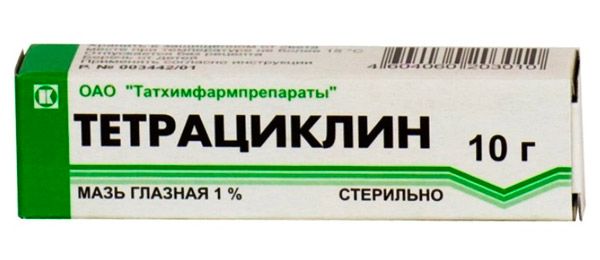
The ointment is placed behind the lower or upper eyelid (depending on where exactly the stye is located). Use three to five times a day until the signs of inflammation subside.
It is very important to consult a specialist before therapy, who can take into account all the side effects from using the product. Patients with fungal and viral eye diseases, intolerance to tetracycline are prohibited from using the drug. It is also not recommended to apply the ointment to pregnant women, children under five years of age and nursing mothers.
Negative symptoms from using Tetracycline ointment are quite rare. Among them are:
- Gastrointestinal disorders.
- Allergy.
- Worsening of the condition with fungal infections.
It is very important to observe all storage conditions of the drug, and also not to use it during teething in children, since tetracycline is deposited in the enamel and dentin, disrupting the normal formation of teeth.
Floxal ointment
A medicine used to treat various eye diseases of bacterial etiology. It is available in the form of an ointment and eye drops. The medicine contains the active substance ofloxacin. It also contains additional components: wool fat, liquid paraffin, white petroleum jelly. It has a bactericidal and antibacterial effect.
Floxal ointment is used to treat barley, blepharitis, dacryocystitis, conjunctivitis, chlamydial eye disease, keratitis.
The ointment is applied in a small thin strip under the lower or upper eyelid. Apply two to three times in 24 hours. The duration of treatment depends on the disease and its severity, but the drug should not be used for more than two weeks. For more effective treatment, the ointment can be combined with Floxal drops.
Patients with intolerance to ofloxacin are prohibited from taking the drug. Do not use for treatment during pregnancy and lactation. When using the drug, the following symptoms may occur: hyperemia, allergy, discomfort in the eyes, burning, dry eye membrane, photophobia, dizziness and lacrimation.
Vishnevsky ointment
Perhaps the most popular remedy that helps with many diseases. The composition of Vishnevsky ointment is quite simple, but at the same time it is natural, safe and effective: xeroform in powder form (an effective antiseptic that fights microbes), birch tar (improves tissue nutrition due to increased blood circulation), castor oil (improves the effect of all other substances in the ointment).
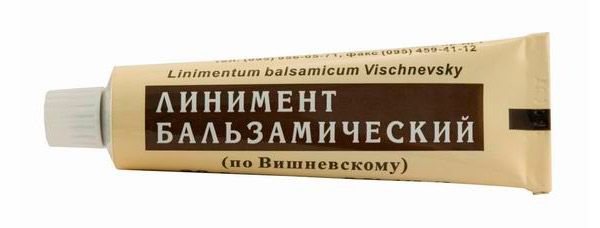
Vishnevsky ointment is often used to treat barley, as it effectively copes with infection and inflammation. It should be applied in an individual dosage several times a day until the unpleasant symptoms of barley disappear. Patients with intolerance to at least one of the components of the drug are prohibited from taking it.
Hydrocortisone ointment
A corticosteroid with the active substance hydrocortisone. It has anti-inflammatory, immunosuppressive, antiproliferative and antiallergic effects.
The dosage is individual, as it depends on the patient's condition, possible side effects and severity of the disease. The duration of treatment is determined by a specialist. Use no more than two or three times in 24 hours.
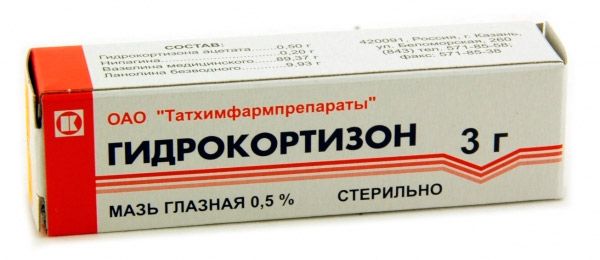
Patients with viral and fungal eye diseases, trachoma, tuberculous eye lesions, and eye epithelial disorders are prohibited from using Hydrocortisone ointment. It is not recommended for use in pregnant women and those who breastfeed.
When using the ointment, the following symptoms may occur: hypocalcemia, hypernatremia, weakness and fatigue, obesity, amenorrhea, paranoia, depressive states, vomiting, vision loss, poor wound healing, ecchymosis, allergies, pain, leukocyturia, itching and burning.
Levomekol ointment
The drug is a complex remedy used in ophthalmology. The medicine contains the following active ingredients: methyluracil and chloramphenicol. The ointment is actively used not only for the treatment of styes and other infectious eye diseases, but also for burns of varying degrees.
Apply daily in small amounts under the lower or upper eyelid (depending on the location of the inflamed area). Patients with intolerance to chloramphenicol or methyluracil are prohibited from using the drug. The ointment can be used during lactation or pregnancy, but before applying, you should consult a specialist.
In rare cases, the use of Levomekol ointment may lead to allergic reactions.
Ichthyol ointment
Antiseptic for local use. It has a pronounced analgesic, antiseptic and anti-inflammatory effect. The active substance in the medicine is ichthyol.
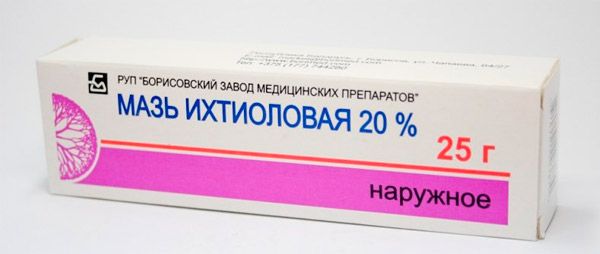
The drug is recommended for the treatment of joint pain, burns, wounds, eczema, barley. Apply a thin line to the affected area (lower or upper eyelid), do not rub. After using the drug, be sure to wash your hands well. The dosage is individual and is determined by an ophthalmologist. As a rule, it is applied two to three times per 24 hours.
Patients under 12 years of age, as well as those with intolerance to ichthyol, are prohibited from using the drug. Sometimes patients experience allergic reactions (rash, burning, hyperemia) to the components of the drug. In this case, therapy should be discontinued.
Oxolinic ointment
An antiviral agent that is often used in the fall and winter to prevent colds, including stye. As a rule, 0.25% Oxolinic ointment is used in ophthalmology. The active substance in the medicine is oxolin.
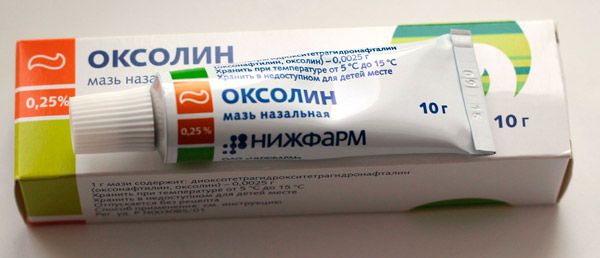
To treat barley and conjunctivitis, apply a thin strip of the preparation under the eyelid (upper or lower). Patients with frequent allergic reactions and intolerance to the components of the preparation are prohibited from using the ointment. Use with extreme caution during pregnancy.
May cause various allergic reactions, including rash, redness, hives, irritation.
Acyclovir ointment
An antiviral drug that is used locally. The active ingredient in the medicine is acyclovir. Also in the base are additional components: nipagin, lipocomp "C", nipazole, polyethylene oxide 400, purified water.
Apply a thin line under the lower or upper eyelid up to five times a day. The interval between applications should be at least four hours. The therapy lasts five to eight days, depending on the severity of the disease.
Patients with intolerance to acyclovir or other components of the ointment are prohibited from using it. It is not recommended for the treatment of pregnant women and children under two years of age.
In rare cases, after applying the drug, the following symptoms may appear: burning, itching, redness, swelling, peeling of the skin.
Erythromycin ointment
A medicinal product in ophthalmology, which is distinguished by its antimicrobial and anti-inflammatory action. The ointment contains the active substance from the group of macrolide antibiotics erythromycin. It also contains additional components: petroleum jelly, lanolin, sodium disulfide.
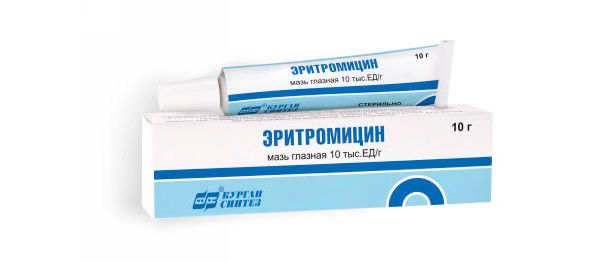
The drug is placed under the lower eyelid three times a day (in some cases it can be used up to five times in 24 hours). The duration of therapy is determined by the attending physician depending on the patient's condition. But it should not exceed fourteen days.
Patients with liver dysfunction and intolerance to erythromycin are prohibited from using the ointment. In rare cases, patients develop an allergy to the components of the drug.
Synthomycin ointment
An antibiotic used to treat many diseases, including barley. It has an effective anti-inflammatory effect. The ointment contains the active substance chloramphenicol.
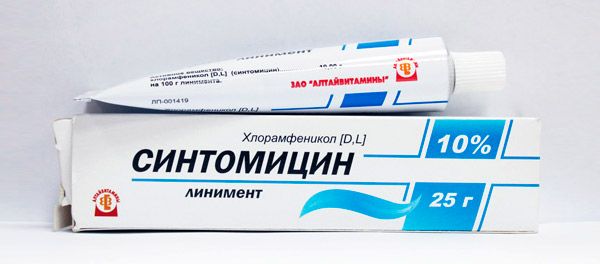
The dosage and duration of therapy are determined by the doctor depending on the patient's condition. It is worth noting that people with chloramphenicol intolerance, suppressed bleeding, psoriasis and eczema, allergies to the components of the drug should not use the ointment. It is also prohibited for use during pregnancy, lactation, and at the age of up to 1 year.
According to reviews, during the use of Syntomycin ointment, patients may experience: leukopenia, thrombocytopenia, anemia, agranulocytosis, secondary fungal infection, allergy, rash, collapse, local irritation of the skin.
Ointments for barley in children
Stye on the eye is a painful disease. If you notice the first symptoms of stye in your child, you need to immediately decide on the choice of a drug for future treatment.
The most famous antibacterial ointment, which is often used to treat barley in children, is Erythromycin. In some cases, Tetracycline ointment also helps. But it is worth understanding that the latter remedy can be used to treat children only after consulting an ophthalmologist. Before using any drug, carefully read the instructions. The ointment is placed under the eyelid, usually twice or three times a day.
Pharmacodynamics
Let's consider the pharmacodynamics and pharmacokinetics of ointments for barley using the example of the popular drug "Tetracycline ointment".
Tetracycline is a well-known bacteriostatic antibiotic with a broad spectrum of action (Streptococcus pneumoniae, Listeria spp., Haemophilus influenzae, Klebsiella spp., Bordetella pertussis, Shigella spp., Chlamydia spp., Treponema spp.). After contact with the skin or mucous membrane, it begins to disrupt the relationship between the ribosome and the transport RNA of pathogenic microorganisms. This disrupts protein synthesis, which leads to the death of bacteria.
Dosing and administration
- Only the ointment that is prescribed by an ophthalmologist after examining your eye is the most effective.
- Always read the instructions for any product carefully to ensure you use it correctly.
- The use of contact lenses is prohibited during treatment.
- Before applying the ointment under the eyelid, wash your hands thoroughly. The same procedure should be repeated after using the drug.
- During the treatment, you cannot use any cosmetics (eyeshadow, mascara).
- The ointments have a thick consistency, so after application your vision may deteriorate slightly for half an hour or an hour.
- The optimal frequency of applying the ointment for barley is two to three times in 24 hours.
- If you additionally use eye drops, at least half an hour should pass between applying the ointment and using the drops.
- Do not use the stye ointment for more than two weeks.
Use barley ointments during pregnancy
Since barley often appears in people with reduced immunity, this disease is popular among pregnant women. Barley usually goes away on its own within five to seven days after its appearance. But if there is no improvement, it is necessary to use available antibacterial drugs in the form of ointments. Please note that during pregnancy, you should first consult with your doctor to avoid side effects. Remember that uncontrolled application of various medications can harm your child. The most popular during pregnancy is Levomycetin ointment.
Storage conditions
It is very important to store any medications, including ointments against barley, in a place protected from small children. Do not allow direct sunlight to penetrate.
 [ 29 ]
[ 29 ]
Shelf life
As a rule, ointments are stored for two to three years.
 [ 30 ]
[ 30 ]
Attention!
To simplify the perception of information, this instruction for use of the drug "Barley ointments" translated and presented in a special form on the basis of the official instructions for medical use of the drug. Before use read the annotation that came directly to medicines.
Description provided for informational purposes and is not a guide to self-healing. The need for this drug, the purpose of the treatment regimen, methods and dose of the drug is determined solely by the attending physician. Self-medication is dangerous for your health.

